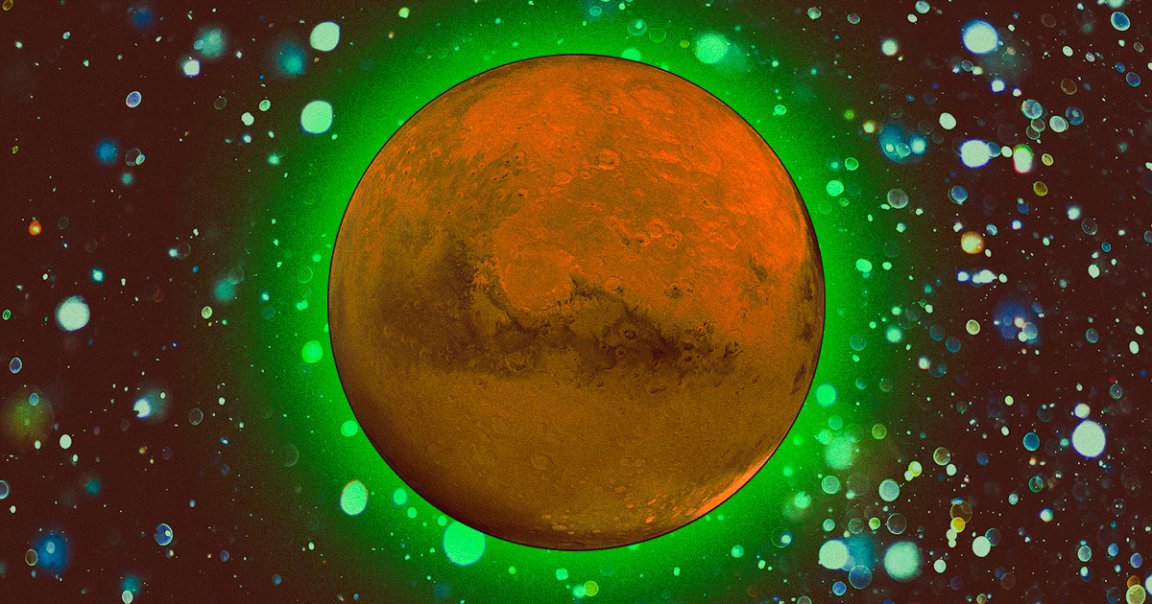
Glow On
During a recent probe, the European Space Agency’s ExoMars probe spotted the Red Planet glowing green at night.
In a blog post, the ESA said that the ExoMars’ Trace Gas Orbiter (TGO) mission was able to detect the green Martian glow, which scientists have known about for some time but have only ever seen in the planet’s “daylight” twice.
This phenomenon occurs, per a paper about the discovery published in the journal Nature Astronomy, as part of a process in which oxygen molecules split apart as the Sun shines on them, get blown to the dark side of the planet, and regroup back into a molecule, causing them to spit off electrons that create the green glow about 30 miles above the planet’s surface.
In 2012 and again in 2020, European scientists were able to observe a “dayglow,” or a similar green halo effect, during the Red Planet’s daylight hours — but scientists seeing this “nightglow” in visible wavelengths when the Sun is not shining on Mars is a first.
Green With Envy
Know jointly as “airglow,” these emissions are akin to the “auroras” we see on Earth when energized particles from the Sun hit our atmosphere — though the biggest difference between the airglow and auroras is that auroras “vary across space and time,” while airglow is “more homogenous,” the ESA blog explains.
Interestingly enough, Earth also has a green airglow effect that astronauts have spotted from above, and like on Mars, the halo is seen as a sort of light ring around the planet.
While we’re lucky enough to have photos of Earth’s airglow both in the daytime and at night, there hasn’t been any such luck with Mars just yet — but ESA scientists are optimistic that by the time humans can land on Mars, they, too, will be able to see the green halo with their naked eyes.
More on Mars: Scientists Find Evidence Mars Was Covered in Rivers